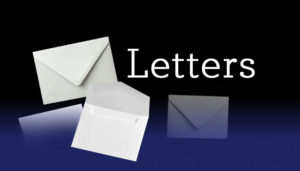Letter writer JANE ALLEN, of Watson, describes the frustrations and setbacks to buying an electric car in Canberra…
I RECENTLY needed to buy a new car. I was determined to make my contribution to cleaner air and to purchase a fully electric car.
 I researched the available options and was totally dismayed. They were far too expensive for my budget or had limited travel distances per charge and, in any case, there is still very limited charging infrastructure. Then the ACT government proposed a future tax-per-kilometre on electric cars. Is that supposed to encourage us?
I researched the available options and was totally dismayed. They were far too expensive for my budget or had limited travel distances per charge and, in any case, there is still very limited charging infrastructure. Then the ACT government proposed a future tax-per-kilometre on electric cars. Is that supposed to encourage us?
What’s more, I am told that some manufacturers are holding off on importing new electric models here, because Australia is known to be way behind elsewhere on its commitment to climate control.
I bailed on my ideals. I bought a petrol car instead, which will be fine until electric options become practicable.
Then, the ACT government introduced free registration for two years on electric cars, but too late for me! Besides, who will buy if the charging infrastructure and reasonable car prices are not available?
Jane Allen, Watson
Nothing is ever done
In response to the government announcement (“1500 kangaroos in yearly cull”), we sent an email to Environment Minister Vassarotti on May 17 and a follow up one to Chief Minister Barr and Ms Vassarotti on May 25, but haven’t yet received a reply.
We explained we had been monitoring Farrer Ridge since 2000 and that over this time kangaroo numbers had remained static.
Of the more than 200 native species of plants we have recorded, only two had disappeared during this time. There are many delicate terrestrial orchids, lilies and forbs that happily exist with the kangaroos who provide nutrients to support them. Why is it necessary to cull?
After the good summer rains there is an abundance of food. In fact the grass will be a fire hazard next summer as it’s drying out now.
There are a lot of rabbits, foxes and weeds that should have been controlled, but nothing ever gets done. Why kill the kangaroos when these pests are left to multiply and have been for many years.
Over the past years we have written to minister after minister about the neglect of the southside reserves, but nothing is ever done.
An overhaul of the management of Canberra’s nature reserves should be seriously considered by allowing the traditional owners to manage the reserves. Due to their innate and historical knowledge of the land they are far better placed to understand the complexity and diversity than the one-dimensional approach of the current managers.
Anton and Julie Lindner, Farrer
Realistic role for hydrogen
RE Ray Peck’s letter (“It’s still electricity for cars”, CN May 27). I don’t dispute his broad vision for a future with many electric vehicles, be they conventional EVs or the much more complex (and somewhat less efficient) hydrogen fuel cell electric vehicles — FCEVs.
As I see it, battery-electric vehicles, with their enormous torque, on all wheels if needed, are ideal for mining equipment such as ore trucks. Developing solid-state battery technology will increase the range of EVs and batteries will become more affordable as the volume of production increases.
But Mr Peck apparently overlooked the last two paragraphs of my May 13 letter. To recap: The ACT generates so much energy from rooftop solar panels that there is often a surplus. Rather than dumping that surplus this energy could be used to generate hydrogen by electrolysis of water.
The hydrogen (in liquid form) could be used – with minimal injector adjustments – to fuel vehicles with internal combustion engines. Liquid hydrogen is much lighter than petrol or diesel, increasing both the range and carrying capacity of vehicles, and making it a realistic and attractive option for long-distance driving or haulage.
Douglas Mackenzie, Deakin
Make time, oldies can’t do it all
HOW often do I read of grandparents writing letters to protect their children or grandchildren’s future or see a photograph of an elderly group fighting to save the latest government desecration proposal.
Where are these younger people? Why aren’t they involved?
Too busy working? Then make time, you’re the ones who will suffer and we oldies can’t do it all.
Greg Cornwell, Yarralumla
Don’t trust City Hill to developers
LAND on the southern slopes of the City Hill precinct clearly cannot be entrusted to developers, even under a government control plan, a doubtful version of which, prepared by consultants to the ACT City Renewal Authority, is currently out for public comment.
The control plan is compelled to reflect an existing (many say, anachronistic) National Capital Authority plan for the area.
As with other developments here these days, money talks, control plans get ripped up, and we end up with excessive, ugly, dross.
In the national interest, the City Hill spaces (and emerging land at West Basin) need to be kept predominantly free of development, to preserve the iconic civil-engineering, landscape and other heritage characteristics of the place; as well as views in and out of the precincts, especially to and from Capital Hill (notably Parliament House’s publicly accessible roof), City Hilltop itself, and the West Basin/lake areas and beyond.
The plan sadly acknowledges the proposed light rail from Civic to Commonwealth Park, which also expensively involves destruction of the above characteristics. City Hill development needs at least the same care and attention given to the albeit slightly constipated Russell development, at the other northern apex of the national triangle.
Land to the south-east of City Hill between London Circuit and lower Allara Street could be developed to reflect the scale and form of the crescent-shaped Capital Tower, the Lakeside Hotel, and parts of New Acton, in the corresponding south-west precinct.
Jack Kershaw, Kambah
‘Obscenity’ is free kick for criminals
INDIGENOUS leader Julie Tongs writes in her opinion piece (CN May 13) that we have to face the awful truth that the worst-performing government in Australia, when it comes to locking up Aboriginal peoples, is the ACT government. And, she adds, that enough is enough.
She states that in the last eight years there has been a 279 per cent increase in Aboriginal incarceration and adds that the Minister for Corrections has advised that 90 per cent of Aboriginal detainees in the AMC have a prior conviction.
Ms Tongs convened a round table on March 24, meeting with everyone except the drovers dog, but including Messrs Rattenbury, Stephen-Smith, Gentleman, Davidson and representatives of the Aboriginal and Torres Strait Islander community. At the meeting Ms Tongs said she insisted that they had reached a crisis point and that a piecemeal approach was not feasible and would not be effective and that only a Royal Commission-style inquiry would suffice.
One is left wondering why at this March 24 meeting were senior experienced officers from the Australian Federal Police excluded from attending and contributing to discussions on Aboriginal criminal activity. Could it be that it would be too difficult to load them up with guilt and that they are thought to be less gullible than hand wringing, lip-biting elected officials, including now Jon Stanhope who (in CN May 27) moans: “The ACT’s rate of Aboriginal imprisonment is an obscenity that we, as a community, have calmly and without protest taken in our stride”.
Let me protest. It’s time that those commenting on Aboriginals in custody and the police/legal system started to apply the word criminal/s after the word Aboriginal which correctly reflects the situation and avoids distortion of fact.
The reality is if you do the crime you may end up doing the time. It’s called living in an ordered community so get used to it and stop the guilt trip and trying to re-engineer everything to give criminals a free kick because that’s the obscenity, along with the collapse of Aboriginal society and their ineffectiveness to manage their own exploding problems, not the fact that it’s an Aboriginal in custody at the AMC where he/she belongs.
All this moaning is indefensible, designed to split the community. Prove to the community that innocent people are being wrongly imprisoned, or brought before the courts and you will find any number of litigating lawyers ready to take on your case with the promise of a big-bucks settlement. Oh, there’s none, why am I not surprised? Could it be that the judge and legal system got it right? Thank you also AFP for your excellent work.
John Lawrence via email
Who can be trusted?
In a world of spin and confusion, there’s never been a more important time to support independent journalism in Canberra.
If you trust our work online and want to enforce the power of independent voices, I invite you to make a small contribution.
Every dollar of support is invested back into our journalism to help keep citynews.com.au strong and free.
Thank you,
Ian Meikle, editor





Leave a Reply